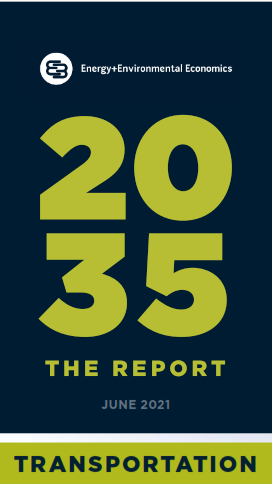
By 2035, electric vehicles (EVs) can encompass all new light-duty and medium-duty vehicle sales as well as all heavy-duty truck sales. That is the premise of a new report from the University of California, Berkeley that also explores the necessary charging infrastructure, many public benefits, and needed policy for all new car and truck sales to be electric by 2035. As part of this expansive analysis on accelerating transportation electrification, E3 wrote a standalone report that estimates the U.S. national electric utility distribution upgrade costs that will be driven by associated increases in EV charging. E3’s report, written with GridLab and researchers at U.C. Berkeley, quantifies the distribution costs and finds that the added EV load could actually help decrease distribution rates paid by consumers.
E3’s analysis estimates the U.S. national electric utility distribution upgrade costs that will be driven by EV charging for the two EV adoption scenarios in the U.C. Berkeley Goldman School of Public Policy 2035 Transportation Report. We estimate costs for two categories of upgrades: primary distribution costs driven by coincident peak EV charging (coincident peak load) and secondary distribution costs driven by the interconnection of EV chargers (connected load). Key drivers of distribution upgrade costs vary widely and are location specific making any nationwide estimate necessarily approximate. For the scenario where EVs comprise all car and truck sales by 2035, we estimate 2050 annual revenue requirements for distribution upgrades that range from $2.8 to $20 billion. Even at the high end, this is a fraction of the $162 billion of annual distribution revenue requirement projected for 2050 by the 2021 Annual Energy Outlook and would actually reduce average $/kWh distribution rates due to added EV charging load. Furthermore, simple managed charging solutions such as time of use (TOU) rates could reduce distribution costs by 50% or more.
E3’s distribution costs report is available on both the E3 site and the 2035 Transportation Report site. You can also visit this site to read the full 2035 Report on rapid electrification of car and truck sales. E3’s Eric Cutter, Emily Rogers, Amparo Nieto, and John Leana contributed to the report.


